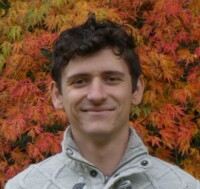Bugnet Group
Asterics – Asteroseismology and Stellar Dynamics
Our understanding of the universe from exoplanets characterization to galactic archaeology strongly relies on our understanding of stellar dynamics. It was recently discovered that stellar evolution models that take into account the rotation of the star and associated hydrodynamic transport processes predict a much faster rotation rate than what is observed. Since then, it is of paramount importance to understand how angular momentum is redistributed inside stars, as it could strongly modify our theory of stellar evolution, and thus the estimation of ages in the universe.
In large part, this turnaround was made possible by Asteroseismology, which then became one of the leading methods for the characterization of stars. This recent branch of stellar physics consists of the analysis of oscillations of stars induced by stationary waves. It is the analogue of seismology on Earth, since it allows to probe the internal structure and the dynamics of the body.
The research activities of the Bugnet group aim at understanding the evolution of stars and their dynamical processes thanks to Asteroseismology. Stellar magnetic fields, from the core to the envelope of the star, are at the center of the group’s research. So far, they have largely been excluded from stellar evolution models due to a lack of observation and of theoretical prescriptions. To make the necessary breakthrough on our understanding of poorly characterized but essential stellar magnetic fields, the group brings together in synergy observational constraints from Asteroseismology, modeling of stellar evolution, and theoretical prescriptions.
Team
Current Projects
- Detection of magnetic fields in the radiative interior of Solar-like stars
- Magnetic fields at the core/surface boundary
- Impact of the magnetic activity on the excitation of stellar oscillations
- Stellar magnetism across the Hertzsprung-Russell diagram
- Angular momentum transport by magnetism in stellar interiors
- Machine learning for asteroseismology and the PLATO space mission
Publications
Vanlaer V, Bowman DM, Burssens S, Das SB, Bugnet LA, Mathis S, Aerts C. 2025. Interior rotation modelling of the β Cep pulsator HD 192575 including multiplet asymmetries. Astronomy and Astrophysics. 701, A5. View
Barrault L, Bugnet LA, Mathis S, Mombarg JSG. 2025. Exploring the probing power of γ Dor’s inertial dip for core magnetism: The case of a toroidal field. Astronomy and Astrophysics. 701, A253. View
Rauer H et al. 2025. The PLATO mission. Experimental Astronomy. 59(3), 26. View
Barrault L, Mathis S, Bugnet LA. 2025. Constraining differential rotation in γ Doradus stars from the properties of inertial dips. Astronomy and Astrophysics. 694, A225. View
Pinsonneault MH, Zinn JC, Tayar J, Serenelli A, García RA, Mathur S, Vrard M, Elsworth YP, Mosser B, Stello D, Bell KJ, Bugnet LA, Corsaro E, Gaulme P, Hekker S, Hon M, Huber D, Kallinger T, Cao K, Johnson JA, Liagre B, Patton RA, Santos ÂRG, Basu S, Beck PG, Beers TC, Chaplin WJ, Cunha K, Frinchaboy PM, Girardi L, Godoy-Rivera D, Holtzman JA, Jönsson H, Mészáros S, Reyes C, Rix HW, Shetrone M, Smith VV, Spoo T, Stassun KG, Wang J. 2025. APOKASC-3: The third joint spectroscopic and asteroseismic catalog for evolved stars in the Kepler fields. Astrophysical Journal, Supplement Series. 276(2), 69. View
ReX-Link: Lisa Bugnet
Career
Since 2023 Assistant Professor, Institute of Science and Technology Austria (ISTA)
2020 – 2022 Flatiron Research Fellow, Flatiron Institute, Simons Foundation, New York, USA
2020 PhD, The French Alternative Energies and Atomic Energy Commission (CEA), Paris-Cité University, Paris, France
Selected Distinctions
2024 ERC Starting Grant
2021 PhD Prize of the French Society of Astronomy and Astrophysics (SF2A)
2020 PhD Prize of the International Astronomical Union (IAU) – Division G
2020 Flatiron Research Fellowship, Flatiron Institute, USA
2019 “For Women in Science” Young Fellow France, L’Oréal-UNESCO
2019 Best Oral contribution, KASC/TASC conference, Aarhus University, Denmark
Additional Information
Visit Group Website
Download CV
Astronomy and Astrophysics at ISTA









